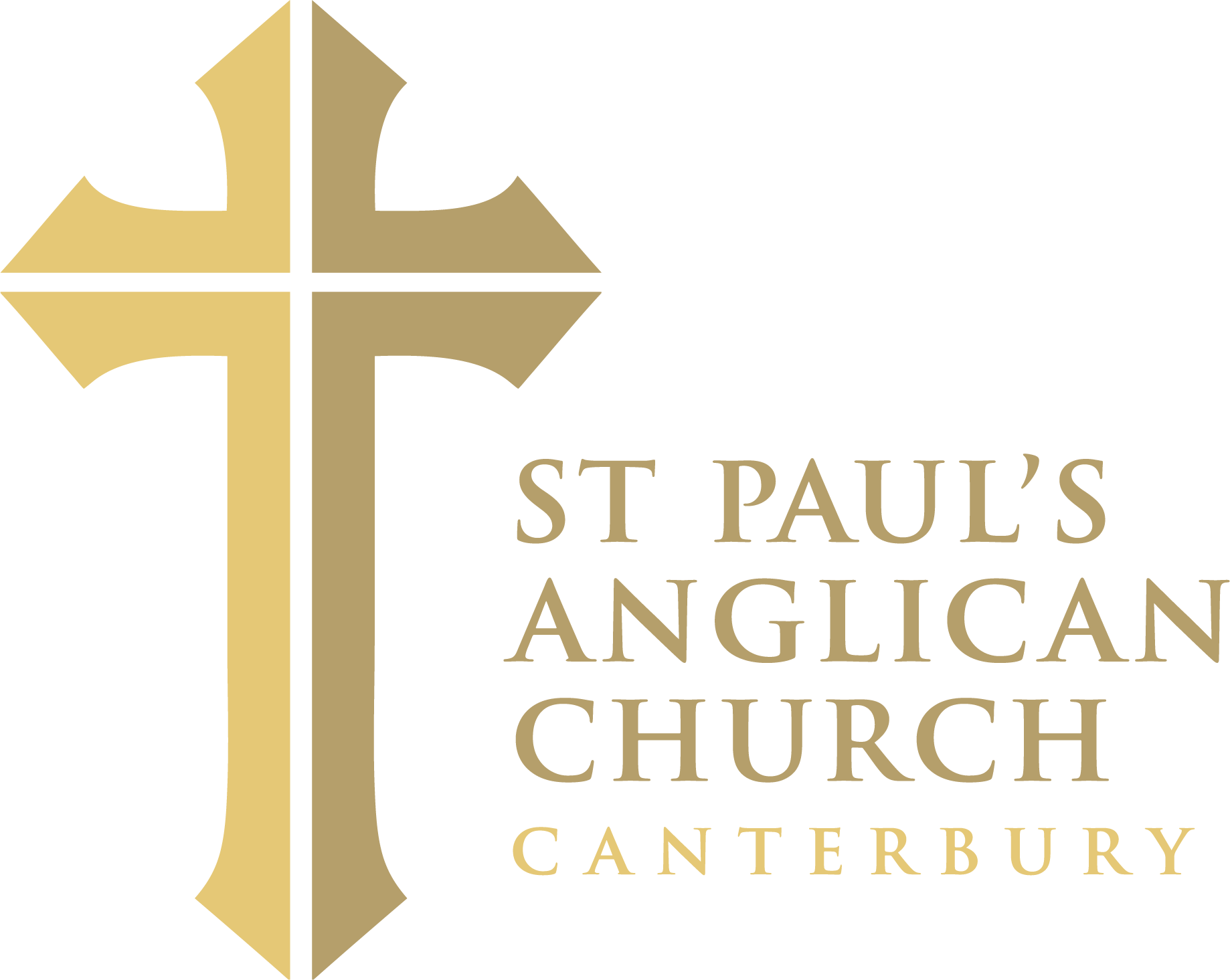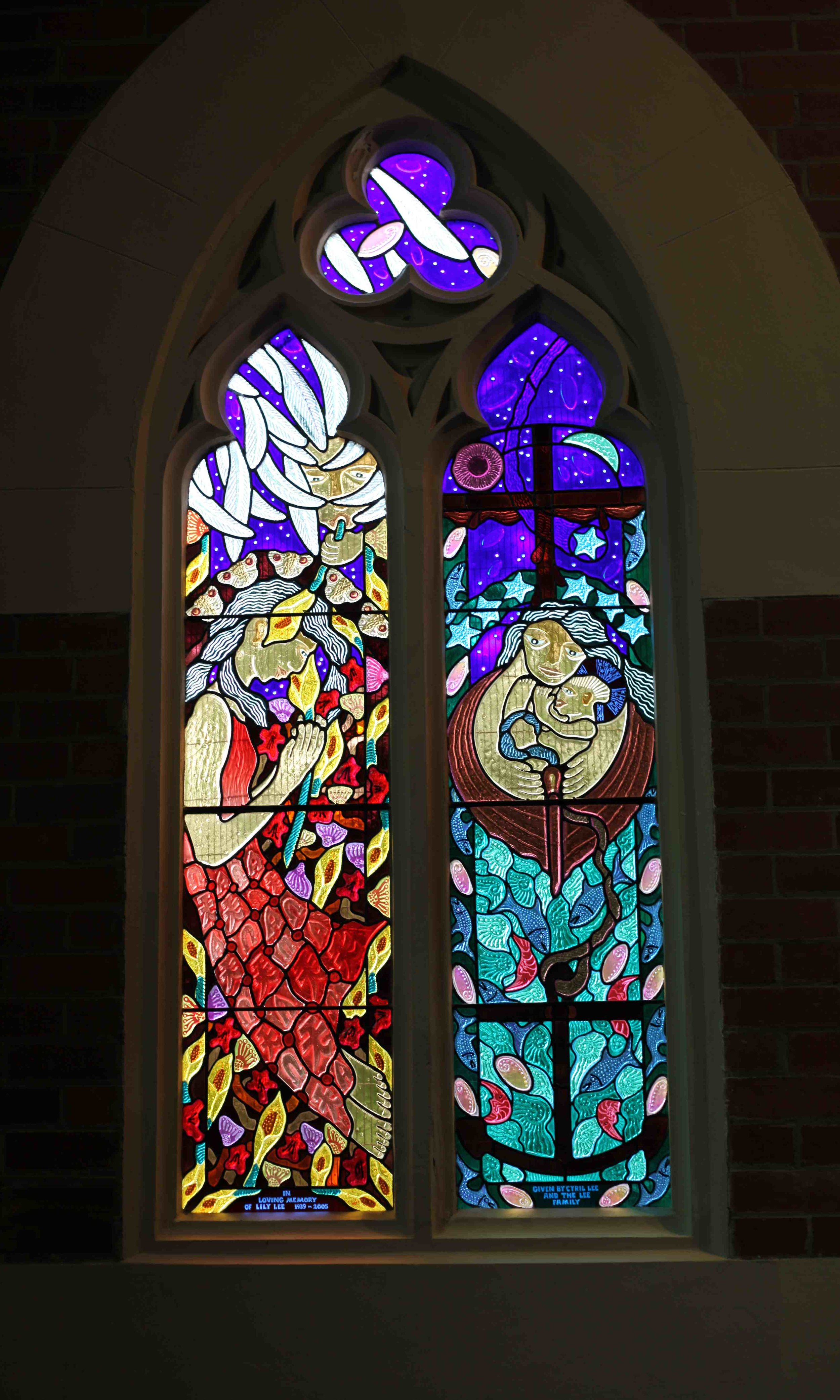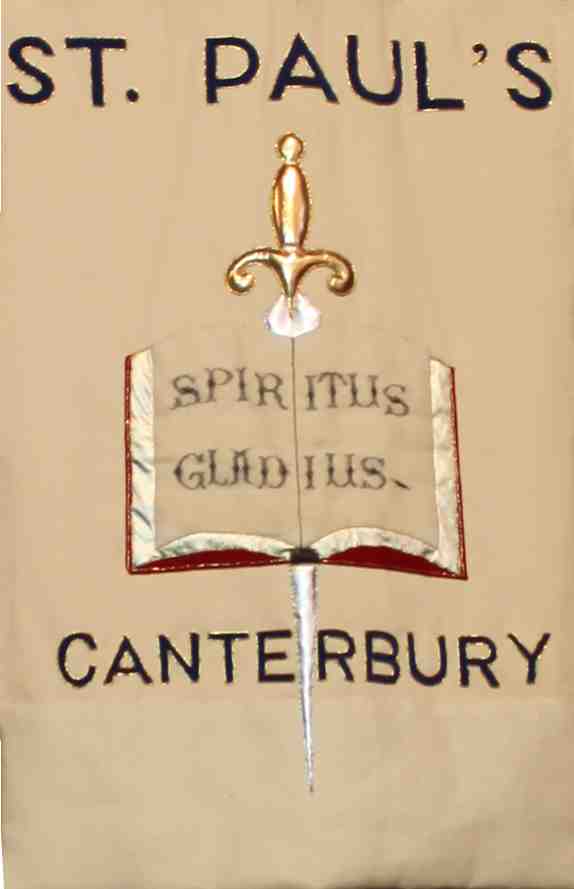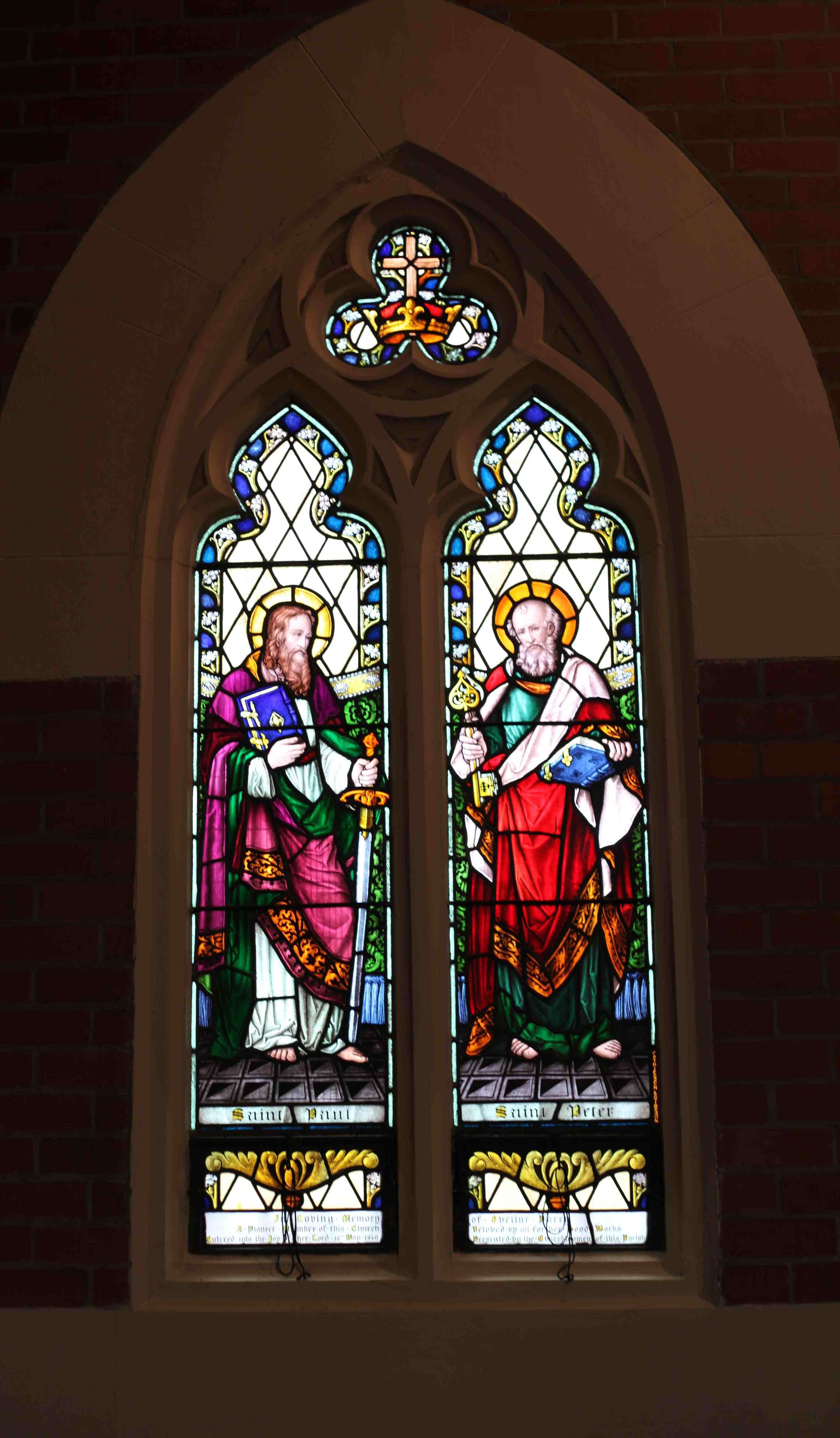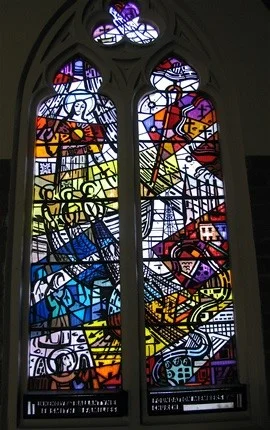A visit to St Paul’s reveals a rich history of Christian devotion and artistic endeavour.
The red-brick building, designed by A E H Carleton and erected in 1914, replaced a small wooden structure that was sold to St Peter’s Murrumbeena. In 1931, the same architects prepared plans for the addition of the choir and chancel, making provision for the Rose window and a second stained glass window in the west wall of the north transept.
The Rose Window - Christ the King of all Nations
The Rose window and the Life of St Paul window (see below) were both created by Christian Waller and gained National Trust Classification (2006). The Rose window, Christ the King of All Nations, was completed in 1932.
“Christian Waller was the first woman in Australia, and one of few in the world at that time, to take up the craft of stained-glass as a profession. From 1929 to the early 1950’s, Christian Waller produced an enormous body of work – over sixty-five individual stained glass panels – which in terms of quantity, artistry and quality, places her as one of the leading Australian stained glass makers of the twentieth century”. Caroline Miley, “Towards The Light”, The Art of Christian Waller, Bendigo Art Gallery, 1992.
The Life of St Paul Window
The Life of St Paul, believed to be Christian Waller’s last stained glass commission, exemplifies her consistent Modernist style over a twenty-year period.
The windows were gifts by, and memorials to George and Elizabeth Redman. As a churchwarden and vestryman, George Redman was involved in the erection and prominence of the church, and was also respected as a local businessman in Canterbury and the surrounding district. Mrs Redman was a devoted member of St Paul’s, working and worshipping at the church for over sixty years.
The Smith / Ballantyne Windows
The Smith and Ballantyne families were foundation members of the church. The estate of Flora Forsythe Smith (1967) bequeathed two legacies for the erection of memorial windows: in memory of her late husband Henry Windle Cleverdon Smith and his family; and in memory of her late father and mother Hugh John and Jane Louise Ballantyne and their family.
J R Ferguson & N Papas of Stained Glass and Leadlights, East Malvern submitted the design. In a handwritten letter by J R Ferguson, the Nave windows are described as “more contemporary in style than I had intended”, and “the meaning is as follows – The long lines descending from the top of the left frame panel represent the veil of the tabernacle which is drawn aside to reveal the figure of Christ. From him grow the fishers of men whose nets reach down past the open tomb and into the roots of the modern city, whilst over the latter hovers the Shepherd’s crook and the sacrifice of Calvary. In the trefoil, you will find the Passover lamb, Oeku Mene (Gk Ecumenical) or ship and peace dove”.
Bishop Sambell dedicated the windows at the 11am service on 25 May 1969.
Eagle Church Lectern Stand
To the Glory of God and in Commemoration of the Declaration of Peace, presented by the Girls Friendly Society on 23 June 1919.
The Reredos
The reredos and series of five painted panels executed by William Montgomery (1850-1927): Supper at Emmaus and Ss Matthew, Mark, Luke and John.
The reredos was installed after the completion of the new St Paul’s brick church in 1915 but it was the addition of five painted panels by January 1916 that were to add significantly to its acceptance by the congregation and its importance as an adjunct to worship. The reredos and series of five painted panels are significant for aesthetic and historic reasons at a State level as the only intact surviving example of this aspect of the oeuvre of Melbourne stained glass artist, William Montgomery. The panels exemplify his artistic ability and are an appropriate adjunct to the church architecture and worship. The reredos and series of panels are historically important as changes in liturgy since the 1960s have seen the removal of many such edifices from Anglican churches, and of the few that survive, most are marble or stone. It remains one of few examples of a simple timber reredos in a parish church. (Dr Bronwyn Hughes, National Trust Classification 2006)
The Sergeant Godfrey Arthur Bennett Memorial
Sergeant Godfrey Bennett, aged 20 years, was killed in action on 25th April 1915 at Gallipoli. He enlisted on 17th August two days before his older brother, Henry George Bennett CB CMG DSO, who went on to become Brigadier General Bennett, who was in command at Singapore when it fell in 1942.
Godfrey Bennett joined the 6th Battalion in which his brother was second in command. Together they sailed on the HMAT Hororata for Egypt and both saw service at Gallipoli, Godfrey tragically being killed in action on the first day of the campaign. Another brother, William Stanley DSO, MC of the 10th Battalion also saw service.
Godfrey Bennett was the youngest son of George J Bennett who was the martinet head teacher of Balwyn State School with a passion for cadet corps training. The family lived at a house called Ashburton, 8 Cross Street, Canterbury. The sons were educated at Balwyn State School and later at Hawthorn Grammar. George Bennett’s name appears on the committee which planned and built the new church building in 1913-1914.
Canterbury Cathedral Corona Stone
A piece of stone from the corona of the East-End section of Canterbury Cathedral that was completed early in the 13th century.
The 1914-1918 Honour Roll
In January 1918, ten months before Armistice Day, a canvassing for subscriptions across Canterbury was carried out for the purchase of a World War I Memorial Honour Board to be installed in St Paul’s.
A design was generously prepared and submitted by Mr Alf Carleton, Vestryman and Architect of St Paul’s. The commission by Brooks, Robinson & Co for an “opus sectile” mosaic design was one of the earliest Honour Boards made in this style in Melbourne. Framed in marble, the board includes colourful segmented tiles and the Rising Sun.
Lest We Forget
